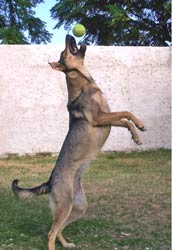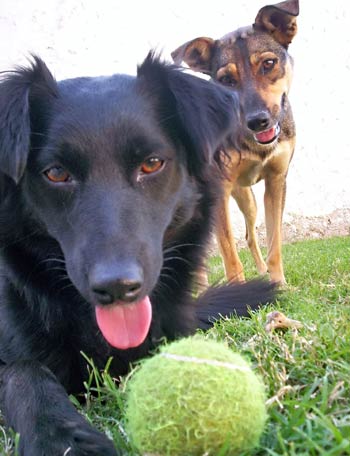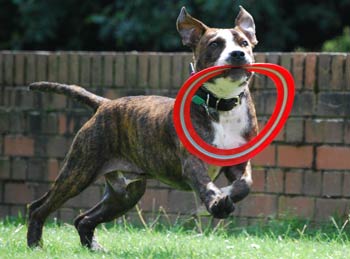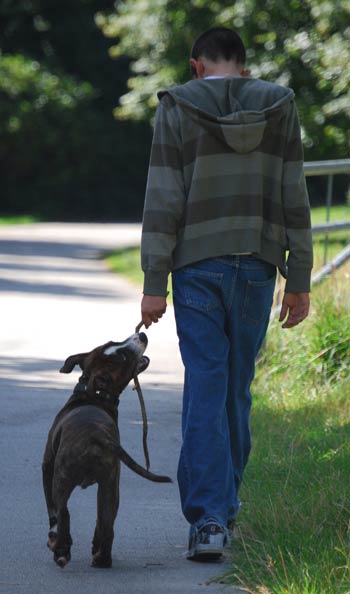Building a relationship with your dog is the most significant factor for success!
Learn the importance of building a relationship with your dog and how to build it successfully for training and a happy life together.
There are many controversies over when to get started and which type of dog training to choose. Before you start wracking your head about if your dog is too young or which dog obedience training method is the “best” one out there, let’s first take a step back.
Despite all of the dog obedience training techniques and approaches, none of them would be possible, or even remotely successful, if there wasn’t first a relationship between dogs and humans. Today many dog trainers base their training systems on different techniques, and yes they will tell you that building a relationship is important, but almost all of them have a different understanding of what that relationship should be and how it works.
General differences in how humans and dogs think

As mentioned above, building a relationship with your dog is the stepping stone for your obedience training and any other dog training out there. Many people spend tremendous amounts of time correcting dog behaviors that actually occurred either because their dog is not trusting of their handler/owner, or there is no connection between them.
Just think of how many people approach dogs with their human point of view simply because they have a limited knowledge of what dogs actually “think” and what their rituals are. On the other hand your dog will approach to you based on their genetic inheritance with the language that they know, as a species.
To start we need to change some general views about “having” a dog;
- We know (as the dog’s owner) that the dog belongs to us
- Our dog usually lives in our house, with us
- We feed the dog and provide all of the necessities for him
- We have certain expectations from our dog
There are many more, but these are just some of the general ones.
Now from the dog’s perspective, they see the same situations completely differently;
- Our dog doesn’t know that he “belongs” to us, we are a fellow pack member and we can be in different positions in that “pack”
- Although our dog lives with us in a place that we call home, he doesn’t know the concept of the house. It is common for a dog to wander away from the house simply because roaming is their way of living. Being tied up 24/7 to an object, for example, is unfamiliar to them.
- The dog may have some perception about you putting food in their dish, however since there is no actions involved to get that food (in ancient times that would have been hunting) there are many missing links about where that food is coming from, or that he should be grateful for it. Dogs are not grateful, not because they are rude, but because they are simply a different species and they don’t have the same feelings or perceptions as we humans do.
- Our expectations of our dogs, in most cases, are contra-indicatory to our dogs’ nature. As much as we expect them to be polite and obedient, they expect us as a pack member, to lead them or follow them in the normal day to day dog activities, like chasing other animals (hunting), researching and expanding territory, defending territory, locating other dogs in order to join them to the pack or for social activities, researching territory for resources etc…
In other words, we have a totally different view of this whole planet, than our dogs do, and this is important to remember when building a relationship.
Understanding the dog’s background and pack structure
One of the most important tools that our dog offers us is his drive for a pack life. There are different types of packs in the animal world, and some of them are more or less structured and regulated than others.
A pack of zebras, for example, have a low structured type of pack where the size doesn’t matter. The relationship between each individual animal is not strongly bonded by any reason other than they have a greater chance of surviving in the pack. However, as an individual animal, if they were not attacked by a predator, they could live a long life alone.

For predatory packs, such as wolves, dogs, lions and others, they have a different type of structure. Hunting is an action that requires precise participation of many, if not almost all of the pack’s members. Expanding and defending territory is crucial for pack survival therefore all of the pack is involved in this ritual, as well. Feeding time in a predatory animal pack is one of the most stressful situations in the natural world. Since it takes time, and the fact that only up to 10% of hunting attempts end in success, I don’t need to go into detail about the importance of rules and structure that keeps each member in the needed harmonious state, during this ritual.
Dogs need to form some type of pack. If there aren’t any dogs around, they will stick to humans. There are even many documented situations where dogs attempted or successfully merged with other animal species.
You can notice a difference in the way dogs communicate with humans in a household where there is only one dog in the family, versus a household where there are two or more dogs. If the dog owner is not knowledgeable enough or doesn’t start training early enough, or if they haven’t focused on building a relationship, there is a big possibility that the dogs will form their own pack and have little or no interest in interaction with humans.
Many dog trainers will purposely not allow their dog any interaction with other dogs, in order to always keep the interest of their dogs in them. Although this is a questionable method, one thing is scientifically proven, if you leave puppies to grow up with other adult dogs, without sufficient human interference, they will have limited connections with humans and it would be very hard, sometimes impossible to achieve successful communication, any type of training or in building a relationship with them.
Building a relationship between your dog and you
To build a successful relationship we need to use what our dog has to offer to us. We don’t think or rationalize the same way so it will be up to us as a handler/dog owner to build and lead this relationship-building experience.
Moving and Playing
- Our dogs are always moving, so the first step will be to ...keep moving. I will repeat this over and over again. Dogs never stop, unless they are eating, resting or sleeping.
- What we call a game, is simply our interpretation of a dog’s performance that to us humans, looks like a childish game. In fact, this is a social interaction in which dogs develop everything, from using prey drive, pack boundaries, limitations, learning capabilities, etc. We can successfully use some parts of this “game” to our benefit, especially while building a relationship.
- Younger dogs are easier to impress and if you start from the beginning you have a great chance for success. For example; even using something like playing tug or a game of retrieve, can be highly motivational for a dog. Now you can combine two powerful tools, the first one is a motivational game, the second one, is that a dog will never relax and play if a situation is too stressful or intimidating in any way so by playing with him, you are assuring him that the situation is safe.
-

If you are playing with your dog in the beginning in a situation with low environmental stress, he will accept the fact that you are playing therefore there is no reason to worry. Gradually, you can go into a highly distractive environment or environments, in which your dog may be shy or scared, and perform the same action of play. It is a boost for your dog’s confidence, and your dog is actively participating with you.
TIP: Keep in mind that if the dog is overwhelmed with the situation (environment), don't force the play sessions. If this happens a few times in a row, your dog may connect playing with stress, and from that point, he may start to avoid playing with you.
Once you reach the level where your dog is confident to interact with you in any given situation, you may say that you are gaining your dog’s trust and building a relationship together.
The importance of the structured dog walk
The dog walk is also a very important component to building a relationship. There are many discussions about how often and for how long we should take our dog for a walk. To give you an idea, I will mention that in nature, wolves and wild dogs walk for about 20+ kilometres a day.
Of course we can’t compare our dogs to their wild ancestors in every situation, however not many dog owners spend even 5kms of daily walking with their dogs, just to give you some perspective.
One more thing that is very important about the walk; there is this misconception that the basic reason for a dog walk is for the dog to relieve themselves, therefore many dog owners simply conclude that the back yard is good enough for that, and bypass the walk entirely.

A walk is one of the basics of a pack’s structure. In nature, animals spend most of their day on a walk and most of their social interactions happen during that time. Use your walking time to interact with your dog, explore different routes and different situations. Use any objects along your way to your advantage.
Climb together on a rock, go over the bench, and make your dog jump over the rope or chain that is marking some parking spots, incorporate simple obedience commands into the walk as well, if your dog is comfortable in the beginning and enjoying it. Play with your dog in a few short sessions, games like the highly motivating, retrieve, fulfilling your dog’s prey drive, for example.
Our goal is to engage our dog, establish his active participation, and work on building a relationship with him.
By accomplishing different tasks together and demanding from your dog certain simple tasks, your dog is getting to know you as his companion. There aren’t any other ways to build a relationship, trust and bond between two different species, as in this case, other than working together. The more you work with each other and the more you actively participate with each other, during the time that you are together, your bond and mutual understanding of each other will get stronger and better.
No matter how good your dog passes any test or any obedience school, if you fail with first building a relationship, you will always have problems communicating with your dog on any level.
Return from Building a Relationship to Training Your Dog and You

